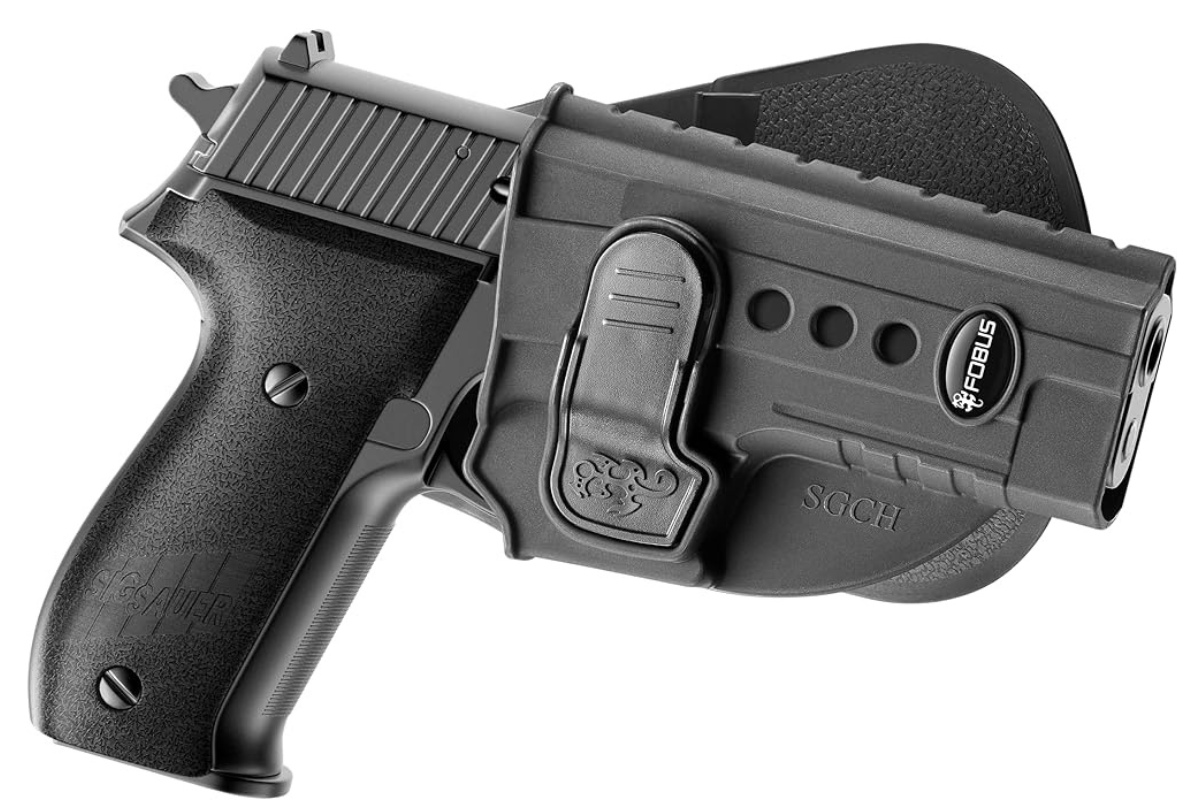You have no items in your shopping cart.
Where to Conceal
In this article, we’ll be going over the pros and cons of the most common methods of concealed carry around the waist, which include: inside the waistband (IWB), outside the waistband (OWB), and appendix carry. For safety purposes, your holster of choice should at least cover the trigger of your
firearm with any of these methods for safety purposes.
IWB – to carry your holster inside your waistband, between your body and clothing. Inside the waistband
is the most popular way to conceal carry.
firearm with any of these methods for safety purposes.
IWB – to carry your holster inside your waistband, between your body and clothing. Inside the waistband
is the most popular way to conceal carry.
- Pros: This method provides quick and easy access to the carrier given a dire situation. With certain holsters, like our C Series Holster, it can be as comfortable as it is convenient. The holster can be placed and carried comfortably anywhere inside your waistband. The most popular placement is at a 4 o’clock for right hand dominants, and 8 o’clock for left hand. It offers ease of concealability and a relatively natural draw.
- Cons: If your shirt has to be tucked in, you’re unable to wear a belt, or are sitting down more often than standing, the IWB method can be uncomfortable. Although there are a few different placements you can explore, comfortability is minimally important as it is to be comforted by the fact that you are able to protect yourself.
- Pros: Having the firearm outside your waistband, you’re able to place it at any point around your waist, giving you the flexibility to put it in the most natural draw position specific to you. Dress options aren’t nearly as limited as IWB and you don’t have to worry about it digging into your hips at a 4 or 8 o’clock placement.
- Cons: Carrying outside of your waistband can become challenging to keep your firearm concealed, as it’s not tucked away in your waist. There are holster options that are conceal friendly, like our Compact Holster which offers a low profile design to retain the hidden aspects as best as possible. Concealability comes down to each individual as well as the holster. Depending on needs and circumstances, this could be a great option for many.
- Pros: Not having to reach your arm slightly back or behind you by keeping your firearm at the center of your body makes for quick and easy access. This method is the most controversial of the three due to the placement, however, its ever growing popularity is appealing to more and more people. That being said, safety to yourself should be kept in mind. With the Extraction Holster, concealed carriers get a number of benefits with one product. It’s adjustable to be placed IWB or OWB but it was mainly designed for the growing popularity with appendix carry. Even with its sleek design, it covers the trigger securely, preventing any fabrics from getting caught between crucial points.
- Cons: Although it is growing in popularity for a number of concealed carriers and, in most cases, is quite comfortable, it may not be the most comfortable placement if the barrel of the firearm is long and pokes you when you sit or personal body structure simply doesn’t align with this method. However, choosing an appropriately designed holster will help. The Extraction Holster listed above was manufactured to rebuttal these concerns and provide concealed carriers with the most pleasant experience possible.
These are just a few of the many possible ways to conceal carry a firearm. Among these, the IWB method remains the most popular with appendix carry fitting into that category. “One size” does not fit all so take the time to try out different conceal methods to find what works best for you. At the end of the day, it’s not meant to necessarily be comfortable, it’s meant to be comforting.
